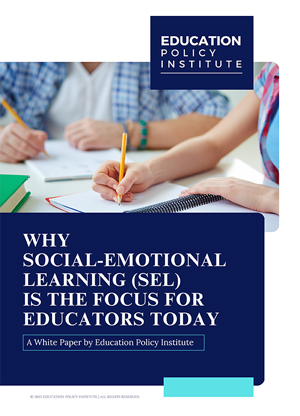Many children around the world have a narrowed view of their career and the reasons for an unfortunate mismatch between their career ambitions and the changing nature of work. It brings out the existent ignorance among students and the ineffectiveness of K12 institutions in informing and exposing them to new types of jobs.
We’ll briefly talk about why current school system isn’t sufficient in connecting children to upcoming careers, and finally understand how schools can help children to aim higher and get ready for the future.
Adolescence: Misaligned career expectations
Important career decisions relevant to their future working lives are made by young people through their teenage years. From the subjects they will choose as majors to whether they will opt for higher education. The place they will study in late teens. The occupational interests they will seek out.
Adolescence, without a doubt, is a key stage in the development of a child’s aspirations, and this decision-making begins from childhood itself. As important as this phase is, evidence shows that children’s aspirations are lagging behind the new world of work. While the working landscape has changed by light years, children’s career expectations haven’t.
What’s more – the jobs young people expect to pursue at the age of 30 are at a high risk of being automated. Young people tend to pick their dream job only from popular age-old occupations like doctors, teachers, and lawyers. And, outside of these top 5 to 10 jobs, youngsters typically select careers at a much higher risk of automation.
Factors influencing children’s aspirations
Young people are often unable to understand the breadth of career opportunities available to them, which leads them to potentially identify with unrealistic career aspirations. What are the factors that influence their choices?
Disproportionate socio-economic backgrounds
Those from well-connected affluent backgrounds show a much better understanding of varied career paths available to them and make better-informed career choices. Three socio-economic statuses are reflected on children’s career ambitions:
- Technical and higher-earning professions, which require advanced education degrees like medicine, and law are way more popular among adolescents with higher socio-economic backgrounds.
- On average, high-performing students from the most disadvantaged backgrounds are four times less likely to have high career aspirations compared to their similarly performing peers from privileged socio-economic backgrounds.
- Many children from disadvantaged backgrounds plan to take up jobs that are at a high risk of automation.
Skewed Gendered Patterns in STEM Professions
Children’s career ambitions also appear to be shaped by gender-specific beliefs about different jobs. Boys overwhelmingly choose traditionally male-dominated professions. And a lot of girls rule out many brilliant career options such as engineering, artificial intelligence, and data science right from a young age itself.
Nearly double the number of boys aiming to become scientists compared to girls. Contrastingly, two and half times greater number of girls want to become doctors compared to boys. Whatever the socio-economic factors and deep-seated gender role beliefs, the narrow spectrum of career aspirations in children is worrying.
Schools need to do a better job of making students aware of the new career options. Furthermore, make them accessible, and build confidence in them to pursue these careers.
You Can’t Be What You Can’t See
It’s time K12 institutions shift their approach to schooling and prepare children for the new world of work. A simple motto of: “You can’t be what you can’t see,” can accomplish this. This entails showing children what’s possible and exposing them to professions they didn’t think exist or they could pursue.
Schools need to help students expand their knowledge about the real world. They can accomplish it in two ways:
Career Awareness (counseling, career events, and guidance)
Young people’s job aspirations are often unrealistic and improbable due to a lack of exposure. Schools can expose students to new careers with effective career counseling sessions.
- A simple act of visits by professionals to the schools and talking to them can turnaround many career-related mental barriers and open students up to new labor markets.
- Parents can be apprised of new career options and be made aware of the possibilities there are notwithstanding the socio-economic backgrounds.
- Regular career events can address the information asymmetries about careers and challenge stereotyping of professions.
- Intense career interventions can be made for young people from disadvantaged backgrounds and girls to broaden their understanding of the new careers.
School-Industry Partnership
Young children start webbing their dreams and ambitions from an early age, but as they reach adolescence their decisions start to get constrained by societal norms. As a result, teenagers show an increased selectivity in goal setting influenced by socio-economic and gender brackets. The only way to break these barriers for them is industry connection.
Bringing role models from industry to schools can open children up to the labor market and motivate them to pursue what they may have dismissed as impossible. Professional leaders who they can connect with and who have made a mark despite the odds, which children believe to be unbeatable, is the best way to introduce adolescents to the new world of work.
Industry engagement can:
- Boost young people’s understanding of jobs out there.
- Enable first-hand industry encounters for students.
- Introduce them to varied careers available within one field, for instance Anesthesiologist in medical, paralegal in law.
- Help students address unrealistic expectations from a career.
- Give a fair overview of the jobs that are likely to see a large decline and those with a promising future.
To Summarize
Children who leave school are, on average, much more highly qualified than any of their preceding generations. They possess a significantly higher level of schooling than their grandparents and parents. And yet, they aren’t more confident or aware of the career options available to them and continue to struggle in the job market. Education providers must recognize this gap, and help children aim higher and show what’s possible. Reinvent how your school guides students’ career expectations!





